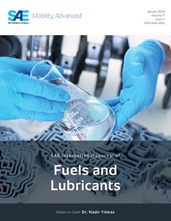A Euro 3 1.8-liter diesel vehicle with an oxidation catalyst was used to investigate real-world exhaust emissions over a real-world driving cycle that included urban congested traffic and extra-urban driving conditions. Diesel fuel and B100 were compared. The B100 fuel was Fatty Acid Methyl Ester (FAME), derived from waste cooking oil, which was mainly RME. A multifunctional additive package was added at 800 ppm to control fuel injector deposit formation. Gaseous emissions were monitored using an on-board heated Temet FTIR exhaust emission analyzer, which can measure 52 species at a rate of 0.5 Hz. A Horiba on board emissions measuring system was also used (OBS 1300), which measures the exhaust mass flow rate together with air/fuel ratio. The results show that CO, THC and NOx emissions exceeded the EURO 3 exhaust emission legislation in real-world driving, due to the presence of higher acceleration and more stop/start actions than in the test cycles. 172 g/km was the certified CO₂ value based on the standard test cycle, but in the real-world driving the vehicle's CO₂ was slightly higher. B100 emissions were similar to those for diesel and both were higher than the legislated test cycle values. NOx was slightly higher for B100, but both fuels were much higher than the legislated value. This was due to the lack of catalytic control for NOx and the proportionality between NOx and acceleration rates. CO emissions were much lower than for the legislated cycle as most of this work was not carried out with a cold start and the catalyst was active for most of the journey. The catalyst front and rear temperatures were monitored to demonstrate that this did not drop below the light-off temperature during the test journeys. There were no driveability issues detected by the driver with B100.
